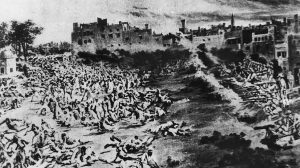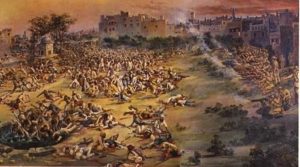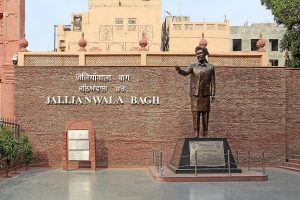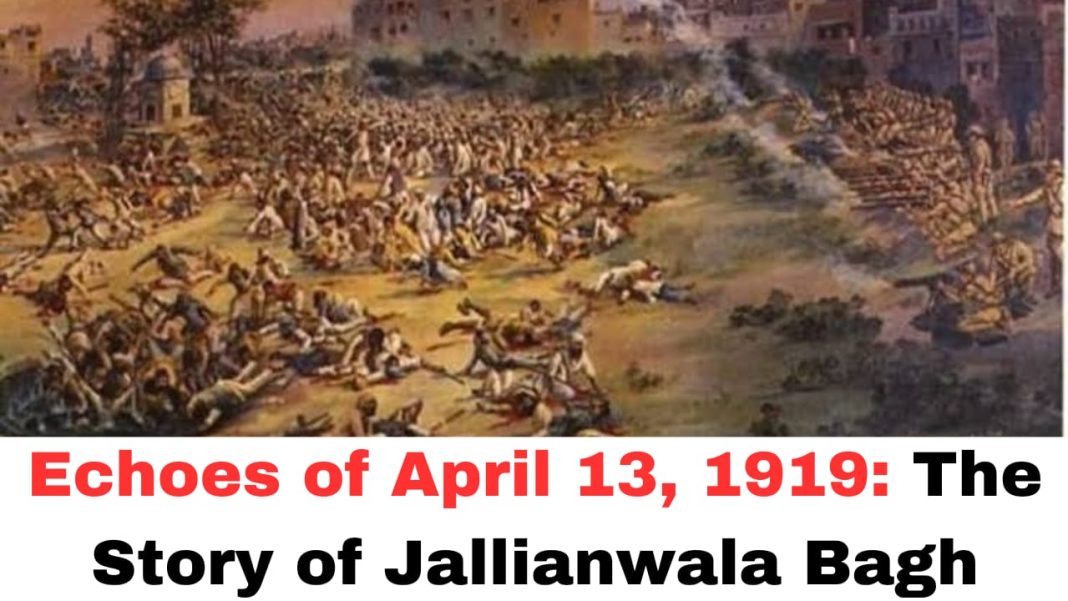Digital News Guru History Desk:
Jallianwala Bagh: A Monument of Sacrifice and Resilience
Jallianwala Bagh in Amritsar, Punjab, is not just a historical site; it is a sacred space that serves as a reminder of India’s struggle for independence. Nestled near the iconic Golden Temple, this garden is synonymous with one of the darkest chapters in Indian history, the Jallianwala Bagh Massacre, which took place on April 13, 1919. The bloodshed that occurred here left an indelible mark on India’s collective consciousness, fueling the nation’s resolve to achieve freedom.
The Background: A Time of Unrest
In 1919, India was a land simmering with unrest. The draconian Rowlatt Act, passed by the British government, allowed the colonial administration to detain individuals without trial. This legislation was seen as an affront to civil liberties and sparked widespread protests across the country. The people of Amritsar, like many others, were incensed by this law and organized gatherings to express their dissent.

On April 10, 1919, British authorities responded to the protests with violence, leading to the deaths of several people. In retaliation, the city erupted in riots, during which a British missionary, Miss Sherwood, was attacked. This incident prompted the administration to deploy Brigadier-General Reginald Dyer to Amritsar with the aim of restoring order.
The Day of the Massacre
April 13, 1919, was Baisakhi, a significant festival in Punjab. Thousands of men, women, and children gathered at Jallianwala Bagh to celebrate and discuss the ongoing political unrest. The gathering was peaceful and unarmed, but it violated the martial law imposed by Dyer, which prohibited public meetings.
Without any warning, General Dyer marched into the Bagh with his troops and blocked the main entrance. Jallianwala Bagh, surrounded by high walls and narrow exits, turned into a death trap. Dyer ordered his troops to open fire on the crowd, aiming directly at the densest groups of people. The soldiers fired 1,650 rounds, ceasing only when their ammunition was nearly depleted. Estimates of the death toll vary, with British records claiming 379 deaths and over 1,000 injured, while Indian sources suggest the fatalities exceeded 1,000.
Impact on the Freedom Struggle
The massacre sent shockwaves across India and the world. It marked a turning point in India’s struggle for independence, exposing the brutal nature of British colonial rule. Prominent leaders like Mahatma Gandhi, Rabindranath Tagore, and Motilal Nehru were outraged. Tagore renounced his knighthood in protest, while Gandhi abandoned his faith in British justice and launched the Non-Cooperation Movement.
The incident also galvanized international opinion. Even some British officials and citizens criticized Dyer’s actions, though he remained unapologetic, famously stating that his goal was to “produce a moral effect” and quell rebellion. Despite being forced to resign, he was hailed as a hero by segments of the British public, a fact that further enraged Indians.

Jallianwala Bagh Today
Jallianwala Bagh has been transformed into a national memorial to honor the martyrs who lost their lives in the massacre. Established in 1951, the site has undergone several renovations to preserve its historical significance.
Memorial Features
- The Martyrs’ Well: One of the most poignant reminders of the tragedy is the well into which many people jumped to escape the bullets. Today, it is enclosed with a protective structure and bears an inscription detailing the horrific events.
- The Bullet Marks: Many of the walls still bear the bullet marks from that fateful day. These scars serve as a powerful visual testament to the violence that occurred.
- The Eternal Flame: A central flame burns in the garden, symbolizing the eternal memory of those who sacrificed their lives.
- The Martyrs’ Gallery: This museum provides visitors with insights into the massacre, displaying photographs, letters, and eyewitness accounts that bring the tragic story to life.
Symbol of Unity and Resilience
Jallianwala Bagh is more than a site of historical tragedy; it is a symbol of India’s unity and resilience. Despite the unspeakable horrors of that day, it strengthened the resolve of the Indian people to fight for their rights and freedoms. It remains a poignant reminder of the sacrifices made during the independence movement and serves as an enduring inspiration for future generations.
Global Recognition
The massacre’s centenary in 2019 brought renewed attention to Jallianwala Bagh. Leaders from India and around the world commemorated the event, calling for reflection on colonial legacies. While Britain has expressed regret, demands for a formal apology remain unmet, underscoring ongoing debates about historical accountability.

A Place of Reflection
For visitors, Jallianwala Bagh is a place of quiet reflection. The lush gardens and memorial structures offer a stark contrast to the horrors of 1919, yet they preserve the memory of those who lost their lives. It is a solemn reminder of the cost of freedom and the resilience of the human spirit.
Conclusion
Jallianwala Bagh stands as a stark reminder of the sacrifices made in the fight for India’s independence. The massacre that occurred here exemplifies the brutality of colonial rule and the unyielding spirit of a people determined to break free. As a historical monument and a space of reflection, Jallianwala Bagh continues to inspire and educate, ensuring that the memory of its martyrs lives on for generations to come.
You May Also Read: Tragic Collision on Delhi-Mumbai Expressway: Rajasthan’s Dausa Bus Accident








